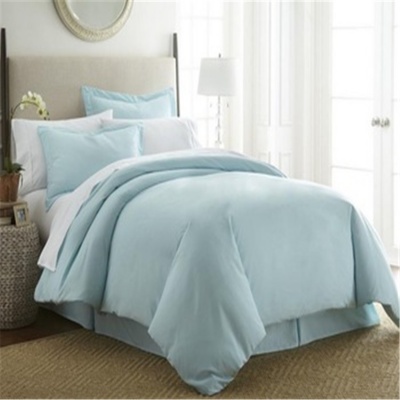FAQ
Have Questions?
Look and Feel
Down is the soft undercoating of goose and ducks. It consists of clusters of light, fluffy filaments growing from a central quill point.
Feathers are the outer growth of birds. Feathers consist of a hard quill shaft (or stem) with a series of fibres extending from each side.
Loft
Loft is a measure of the fluffiness of down and is also a great indicator of its overall quality. The loft measurement is not used for feather.
Duvet Warmth and Weight
Down is the best insulator per ounce over any other fill, natural or man-made. Down provides much more warmth per ounce than feathers. For this reason, feather duvets contain significantly more fill and are heavier than down duvets. They require more fill to achieve the same level of insulation and warmth.
First, the down from mature geese is larger and thicker, which makes garments filled with goose down much warmer.
Second, goose down is more flexible and fluffier than that of ducks.
The last difference is key for people sensitive to smells: Compared to duck down, goose down has no strange odor. Geese are often “vegetarians” and eat clean, while ducks are omnivorous, which could give their feathers and down a strong scent.
These are the advantages that account for the higher prices of garments made with goose down.
However, duck down is still a good choice if you live in place where winter is windy, yet not that cold.
Yes they are!
All of the fill we use is rendered hypoallergenic through the cleaning process, which removes allergens like dust, pollen and bacteria.
It’s recommended to use a duvet cover or pillow protector at all times to avoid the buildup of allergens over time!
Shake and fluff a duvet every morning after use. This will help to keep the feathers or other fill evenly distributed. If you keep a duvet cover on the duvet, you’ll rarely need to clean the duvet itself. You should wash the cover as often as you change your sheets. It’s usually recommended that when necessary, you wash your duvet in a large commercial washing machine. Chemicals in dry cleaning can break down the fibers of the fill. Dry a duvet using the gentle heat setting on the dryer. When it’s partially dry, take it out, give it a good shake to break up damp clusters of filling, and finish the drying. Hang a duvet out to air dry for at least 24 hours to make certain all sections are dry before replacing on the bed. If you keep the duvet inside a duvet cover, it will stay clean and fresh for months.
1. Down & Feather Products
Products filled with down and feather should not be washed at home. Down and feather are very sensitive to moisture. If any moisture is left inside the product, mold, mildew and other bacteria can develop. Besides, most home machines are too small for bulky bedding products, which can cause additional wear and tear on the fabric!
2. Microfiber Down Alternative Products
Products filled with microfiber can be washed and dried at home in large machines on a low heat setting.
You can find detailed care instructions for your product by visiting the product page and clicking ‘Care’. Care instructions are also written on your product packaging.
Please note that caring for your product improperly may result in invalidation of the warranty.
All of our Down/Feather supplier are R.D.S. Certified, ensure that down and feather come from animals that have not been subjected to any unnecesssary harm.


